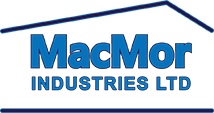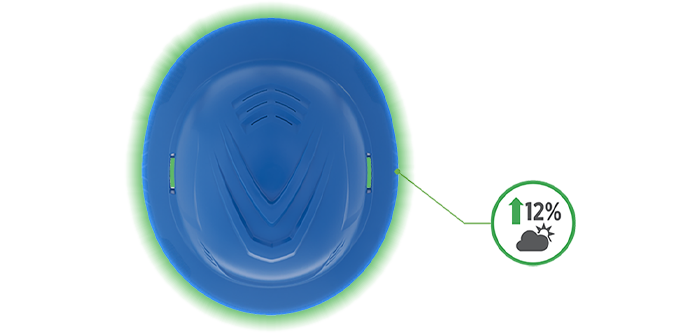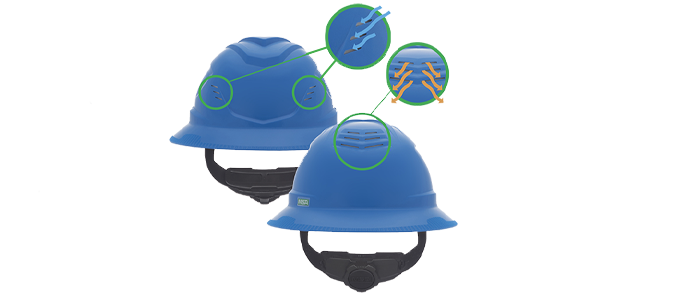MSA's V-Gard® C1™ Hard Hat - The Latest Technology for Preventing Heat Stress!
With the arrival of summer and the intensifying heat, ensuring our safety and well-being in hot environments takes on the utmost importance.
In this blog post, we'll shine a spotlight on the MSA V-Gard® C1™ Hard Hat—an extraordinary piece of headgear that not only ensures your safety but also plays a vital role in mitigating and preventing heat stress. We'll explore:
-
The unique features of the MSA V-Gard® C1™ Hard Hat and how they prevent heat stress
-
What is heat stress? Including symptoms, prevention, and how it impacts job sites
How the MSA V-Gard® C1™ Hard Hat Helps Prevent Heat Stress
With a unique blend of innovative features, the MSA V-Gard® C1™ Hard Hat offers a cooler and more comfortable experience, even under intense sun exposure.
Let's explore how it effectively mitigates the risks of heat stress:
ReflectIR™ Thermal Aluminum Barrier: significantly reduces the amount of heat absorbed by the hard hat by reflecting infrared radiation. The ReflectIR™ is effective in all colours but the results do vary. For example, a white hard hat, because it will naturally absorb less heat is able to provide cooling up to 7°C while in comparison, the black variant is able to reduce the internal temperature by up to 11°C.

Full Brim Design: offers 12% more coverage than the standard V-Gard® model. This extended coverage provides increased shade, shielding more of the face and neck from direct sunlight. By minimizing direct contact with sunlight, the hard hat helps reduce heat absorption and lowers the risk of heat-related issues.
[Optional] Venting: significantly improves airflow and enhances the overall cooling experience.
The strategically placed vents in the hard hat promote better air circulation, allowing fresh air to flow into the helmet while facilitating the exhaustion of heat. This active ventilation system helps to dissipate heat away from the wearer's head, creating a refreshing and cooler environment inside the hard hat.
Everything You Need to Know About Heat Stress
According to the Occupational Safety and Health Administration (OSHA), when temperatures reach 32°C, there can be a significant impact on productivity, with a 29% drop reported. Additionally, the statistics indicate that errors can increase up to 300% under such high-temperature conditions.
Preventing heat stress should be one of the top priorities for safety managers on job sites across Canada. Understanding its symptoms, risks, and preventive measures is crucial for staying safe. By addressing this often-overlooked safety hazard, businesses can reduce missed time, workplace errors and injuries, and keep workers safe on the job.
Frequently Asked Questions about Heat Stress
What is heat stress?
Heat stress refers to the body's inability to regulate its internal temperature due to prolonged exposure to high temperatures. It can occur in various situations, such as working in hot and humid environments, engaging in intense physical activities under the sun, or being exposed to extreme heat without proper cooling measures.
What are the 5 stages of heat stress?
- Heat Rash: Also known as prickly heat, this is the initial stage characterized by irritated skin, redness, and small blisters.
- Heat Cramps: Painful muscle cramps occur due to electrolyte imbalances caused by excessive sweating and dehydration.
- Heat Exhaustion: Involves more severe symptoms, including heavy sweating, weakness, fatigue, dizziness, headache, and nausea.
- Heat Syncope: Refers to fainting or light-headedness caused by decreased blood flow to the brain due to dehydration and heat exposure.
- Heatstroke: The most severe stage of heat stress, heatstroke is a medical emergency. It involves a high body temperature (above 40°C/104°F), confusion, loss of consciousness, seizures, and organ failure.
How long does it take to recover from heat stress?
Recovery time from heat stress can vary depending on the severity of the condition. Mild cases of heat exhaustion may resolve within a few hours of rest in a cool environment, adequate hydration, and re-establishing electrolyte balance.
Severe cases, such as heatstroke, require immediate medical attention and may take days or longer for a full recovery.
What happens to your body during heat stress?
During heat stress, your body's core temperature rises, and it struggles to maintain normal temperature levels. Blood vessels dilate, causing increased blood flow to the skin to facilitate heat dissipation through sweating. Excessive sweating leads to dehydration and electrolyte imbalances. If the body's cooling mechanisms become overwhelmed, it can result in heat-related illnesses like heat exhaustion or heatstroke, which can have severe consequences on various organs and bodily functions.
Can the MSA V-Gard® C1™ Hard Hat eliminate the risk of heat stress?
While the MSA V-Gard® C1™ Hard Hat offers innovative features that help mitigate heat stress, no one product can eliminate the risk. Always maintain proper hydration, acclimate to elevated temperatures, and wear breathable light clothing.
Is the ReflectIR™ Thermal Aluminum Barrier effective in all colors of the hard hat?
The ReflectIR™ technology is effective in reducing heat absorption in both white and black hard hat models. The white hard hats offer a 7°C reduction, while the black hard hats provide a remarkable 11°C decrease.
Can the MSA V-Gard® C1™ Hard Hat replace other measures for heat stress prevention?
The MSA V-Gard® C1™ Hard Hat is a valuable tool in heat stress prevention, but it should be used in conjunction with other preventive measures. It is important to stay hydrated, take regular breaks, and follow proper heat stress prevention guidelines.
Can the MSA V-Gard® C1™ Hard Hat be used in high-temperature environments?
The ReflectIR™ Thermal Barrier’s benefits only come into play when exposed to direct sunlight. However, the C1 features the largest vents available on a full-brim hard hat which can help mitigate the effects of heat stress in almost every environment.





